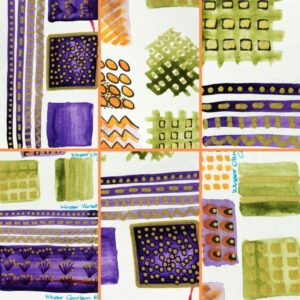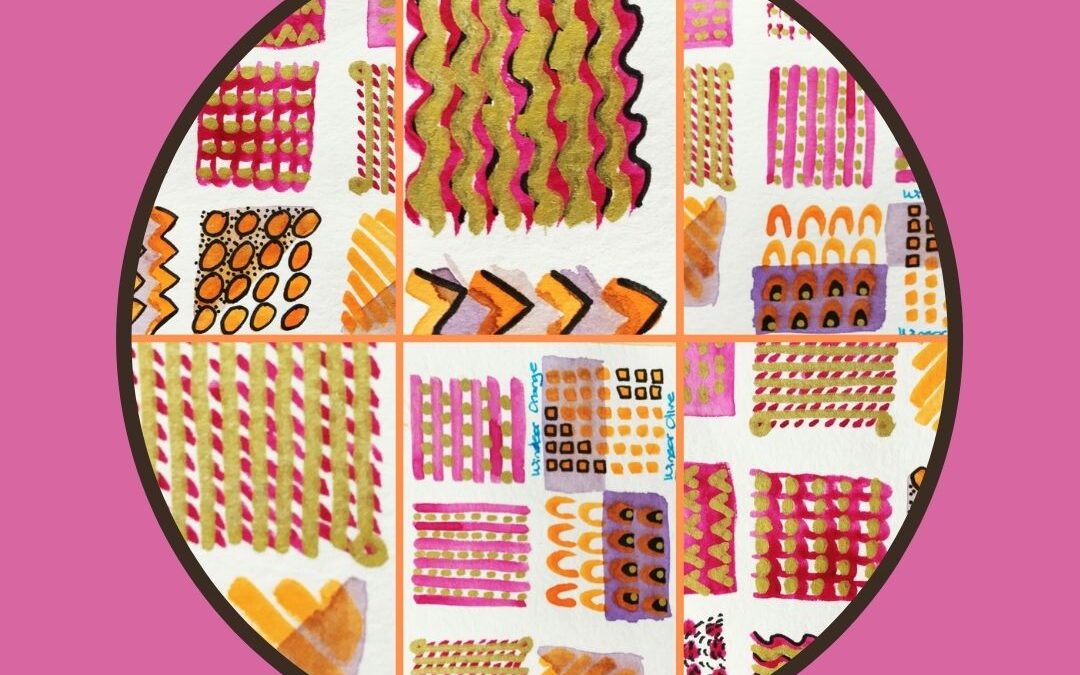Teaching design is not easy.
Teachers don’t know what you know and what you don’t know; they don’t know your strengths or weaknesses – nor your passions, beliefs, or feelings.
And they’re the things that help inform and impact you as an artist, particularly when it comes to creating your own design work.
So many tutors seem to believe design begins and ends with the Elements and Principles of Design – and although they’re important to understand, many simply don’t teach how to actually use them in conjunction with each other.
For instance, how they can be employed for specific purposes, to create strength, passivity or mood. Why should weight be directed towards the bottom of your design? How do you create unity in your work? And the really big one – why do so many artists break the rules, yet still create amazing art?
I’ll scatter some of my design work throughout this post.

I believe passionately in self-directed learning – where you teach yourself at your own pace, in your own time. As a teaching platform, face-to-face classes simply have too many variables, it’s too easy to lose focus, and classes are often hijacked by the most vocal. It’s often teaching what someone else thinks you need to know – not what’s most important to you.
I can’t tell you how many times I’ve walked around shows to see the same work repeated over and over, obviously from the same tutor’s workshop, or even worse, a tutor’s style superimposed over someone else’s style.
That’s just technique – the mechanical, habitual repetition of something learned.
I’m talking about unlocking that unique caged ability – and we all have it – and letting that beautiful design bird soar and soar.
I believe you can quite easily, teach yourself to design – and what’s more, design to your passions and strengths, beliefs, and feelings. You are the only person able to find your artistic voice – and they’re what make up you, the artist.

My advice? Go back to basics. You could also check out my latest Top 10 Tips for Design and Stitch video on YouTube.
Grab two large sketchbooks – one will become a visual diary where you can accumulate images and ideas that appeal to you. The other will become home to all your design work from your self-directed learning.

Here are some ideas for your self-directed learning journals:
- Research The Elements and Principles of Design with examples of how you would use them.
- Include chapters on colour and value – and I’d suggest working in paint to really ‘see’ how colours mix. Paper, coloured pencils, coloured markers or even cut out snippets of paper work too.
- Make your own grey scale – it’s one of the most valuable exercises out there. Make coloured value scales – in one colour or using a different colour at each end, mixing beautifully and evenly through to each colour. My favourite is yellow to black – you get the most gorgeous olivey greens.
- Learn how to mix colours through their light and dark values.
- Research design styles, art movements and artists you admire.
- Teach yourself to sketch, paint and collage – watch YouTube.
- Learn to use other mark-making skills with unusual tools like twigs and leaves.
- Learn to collage, print and use different media – incorporate text – whatever excites you – just give it a go.
- Use a photocopier to enlarge or shrink designs – now cut them up and use them again.
- Make notes as you work about what worked and what didn’t and why.
- Take lots of photos – use macro shots.
- Read, search Pinterest, Google. Be organised and set a routine.
- Begin to create your own designs right now. Work to a size that feels comfortable and make notations as to how you’d incorporate textiles and embroidery as you work – this is the hard part for some.
- Sometimes working within a frame helps – make a cardboard frame and re-use it for each design.
- Begin to follow a theme to create designs, but when that lightbulb moment happens, be happy to explore other ideas as well.
- Best of all – you should begin to see your style, your unique style, begin to shine through.
Try to make your visual diaries beautiful. Include inspiring quotations.
Take care with presentation – add scrapbooking if that’s your thing and you have the time – because both these journals will become a resource you can look over, add to, learn from and admire for years to come.
How do I know? I still have mine – and I still refer to them.


